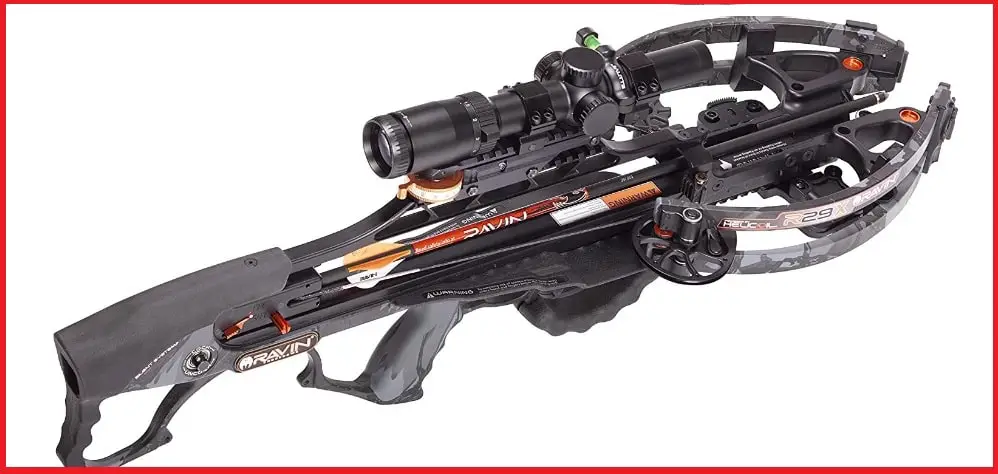Choosing the right guy line tensioner is crucial for securing your tent or tarp effectively. With various types available, understanding their features and advantages is essential.
In this article, we explore common guy line tensioners, their functionalities, and how they enhance outdoor experiences.
Whether you’re a seasoned camper or a beginner, this guide will help you select the ideal tensioner for a hassle-free camping trip.
5 Types of Guy Line Tensioners
A guy line tensioner is a device used to tighten and secure guy lines, which are ropes or cords used to stabilize and anchor tents, tarps, and other outdoor structures.
Guy line tensioners are designed to make it easier to adjust the tension of the guy lines, ensuring that they are properly tightened and providing stability to the structure.
There are various types of guy line tensioners available on the market, each with its own features and advantages. Some common types include:
Plastic Cord Tensioners
These are lightweight and affordable tensioners made of plastic. They typically have a simple design and are easy to use. They are often used for camping, hiking, and other outdoor activities.
Pros of Plastic Cord Tensioners:
- Affordability: Plastic cord tensioners are often more affordable compared to other types of tensioners, making them a budget-friendly option for outdoor enthusiasts.
- Lightweight: Plastic tensioners are lightweight, which is beneficial for backpackers and hikers who prioritize reducing the weight of their gear.
- Ease of Use: Plastic cord tensioners are generally easy to use, with a simple design that allows for quick and straightforward adjustment of guy line tension.
- Durability: While not as durable as some other materials, plastic tensioners can still withstand regular use and provide reliable tensioning for guy lines.
- Widely Available: Plastic cord tensioners are widely available in outdoor stores and online, making them easily accessible for purchase.
Cons of Plastic Cord Tensioners:
- Less Durability: Plastic tensioners may not be as durable as tensioners made from alloy materials or other stronger materials. They can be more prone to wear and tear, especially in harsh weather conditions or with heavy use.
- Limited Load Capacity: Plastic cord tensioners may have a lower load capacity compared to tensioners made from stronger materials. This means they may not be suitable for heavy-duty applications or situations where high tension is required.
- Potential Slippage: Depending on the design and quality of the plastic tensioner, there is a possibility of slippage under heavy tension or in certain weather conditions. This can result in the guy line losing tension and potentially affecting the stability of the structure.
- Environmental Impact: Plastic tensioners contribute to plastic waste and may not be as environmentally friendly as tensioners made from recyclable or biodegradable materials.
Top Pick
Alloy Tensioners:
These tensioners are made of durable alloy materials, such as aluminum or titanium. They are lightweight, strong, and resistant to corrosion.
Alloy tensioners are often preferred by backpackers and outdoor enthusiasts who prioritize durability and weight savings.
Pros of Alloy Tensioners:
- Durability: Alloy tensioners are known for their durability and strength. They can withstand heavy use and harsh weather conditions without breaking or wearing out easily.
- Lightweight: Alloy tensioners are lightweight, making them suitable for backpackers and hikers who prioritize reducing the weight of their gear.
- Corrosion Resistance: Alloy materials, such as aluminum or titanium, are resistant to corrosion. This makes alloy tensioners suitable for use in wet or humid environments without the risk of rusting.
- Higher Load Capacity: Alloy tensioners generally have a higher load capacity compared to plastic tensioners. They can handle higher tension and provide more stability to guy lines.
- Precise Adjustment: Alloy tensioners often have finer adjustment capabilities, allowing for more precise tensioning of guy lines. This can help achieve the desired level of tension for optimal stability.
Cons of Alloy Tensioners:
- Higher Cost: Alloy tensioners are typically more expensive compared to plastic tensioners. The higher cost may be a deterrent for budget-conscious outdoor enthusiasts.
- Less Widely Available: While alloy tensioners can be found in outdoor stores and online, they may not be as widely available as plastic tensioners. This can limit the options when it comes to choosing the specific type or brand of alloy tensioner.
- Potential for Slippage: Depending on the design and quality of the tensioner, there is still a possibility of slippage under heavy tension or in certain weather conditions. It’s important to choose high-quality alloy tensioners to minimize this risk.
- Environmental Impact: While alloy tensioners are generally more durable, they are not as environmentally friendly as tensioners made from recyclable or biodegradable materials.
Top Pick
Self-Tensioning Guy Lines:
These tensioners have a built-in mechanism that automatically adjusts the tension of the guy line. They eliminate the need for manual adjustment and make setup and takedown quicker and easier.
Self-tensioning guy lines are popular among ultralight backpackers and campers who value convenience and efficiency.
Pros of Self-Tensioning Guy Lines:
- Convenience: Self-tensioning guy lines eliminate the need for manual adjustment and constant monitoring of tension. The elastic cord automatically adjusts and maintains tension, saving time and effort.
- Versatility: Self-tensioning guy lines can adapt to changing conditions, such as wind or fabric stretch, by stretching or contracting accordingly. This helps maintain the stability and integrity of the shelter.
- Ease of Use: Setting up and taking down a shelter with self-tensioning guy lines is generally quick and straightforward. There is no need for complex knot tying or additional tensioning devices.
- Reduced Risk of Over-Tensioning: Self-tensioning guy lines can help prevent over-tensioning, which can lead to damage or stress on the shelter fabric or structure. The elastic cord provides a certain level of flexibility and forgiveness.
Cons of Self-Tensioning Guy Lines:
- Limited Adjustability: Self-tensioning guy lines may have limited adjustability compared to manual tensioning methods. This can be a disadvantage if precise tensioning is required for specific conditions or preferences.
- Dependency on Elastic Cord: The effectiveness of self-tensioning guy lines relies on the quality and durability of the elastic cord. Over time, the elasticity may degrade, affecting the tensioning capability.
- Potential for Slippage: In certain situations, such as extreme wind or heavy loads, self-tensioning guy lines may experience slippage or lose tension. This can compromise the stability and security of the shelter.
- Compatibility: Self-tensioning guy lines may not be compatible with all types of shelters or guy line attachment points. It’s important to ensure that the shelter design and attachment points are suitable for self-tensioning guy lines.
Top Pick
Line-Lok Tensioners:
Line-Lok tensioners are a type of tensioner that uses a small plastic cleat to secure the guy line. They are designed to grip the line tightly and prevent slippage. Line-Lok tensioners are known for their reliability and ease of use.
Pros of Line-Lok Tensioners:
- Convenience: Line-Lok tensioners are designed for easy and quick adjustment of guy lines. They allow for effortless tightening and loosening of the line without the need for additional knots or tools.
- Secure Tension: Line-Lok tensioners provide a reliable and secure hold on the guy line, preventing slippage and maintaining tension even in challenging weather conditions.
- Versatility: Line-Lok tensioners can be used with a wide range of rope sizes, typically ranging from 1 to 8mm. This versatility makes them suitable for various outdoor applications, including tarps, tents, and hammocks.
- Durable: Line-Lok tensioners are often made from durable materials, such as plastic or metal, ensuring long-lasting performance and resistance to wear and tear.
Cons of Line-Lok Tensioners:
- Weight: Depending on the specific design and material, Line-Lok tensioners can add some weight to your gear compared to other lightweight tensioning options, such as knots or self-tensioning systems.
- Limited Load Capacity: While Line-Lok tensioners are generally suitable for most camping and backpacking applications, they may have limitations in handling extremely heavy loads or high tension requirements.
- Compatibility: Line-Lok tensioners may not be compatible with all types of guy lines or attachment points. It’s important to ensure that the tensioner is suitable for the specific rope size and attachment method used in your setup.
- Potential for Breakage: In rare cases, Line-Lok tensioners made from lower-quality materials or subjected to excessive force may break or fail. It’s important to choose high-quality tensioners and inspect them regularly for any signs of damage or wear.
Top Pick
Titanium Micro Guy Line Tensioners:
These tensioners are made of lightweight titanium and are specifically designed for use with tarps and hammocks. They are compact, durable, and easy to adjust.
Pros of Titanium Micro Guy Line Tensioners:
- Lightweight: Titanium is known for its lightweight properties, making the Titanium Micro Guy Line Tensioner a great option for those looking to reduce the weight of their gear.
- Durable: Titanium is a strong and durable material, ensuring that the tensioner can withstand the rigors of outdoor use and last for a long time.
- Corrosion-resistant: Titanium is highly resistant to corrosion, making it suitable for use in various weather conditions without the risk of rust or degradation.
- Easy to use: The Titanium Micro Guy Line Tensioner is designed to be user-friendly, allowing for easy adjustment and tensioning of guy lines without the need for additional tools or complicated setups.
Cons of Titanium Micro Guy Line Tensioners:
- Cost: Titanium is generally more expensive compared to other materials used for tensioners. The higher cost may be a deterrent for those on a tight budget.
- Limited availability: Titanium Micro Guy Line Tensioners may not be as widely available as tensioners made from other materials. This could make it more challenging to find and purchase them.
- Compatibility: It’s important to ensure that the Titanium Micro Guy Line Tensioner is compatible with the specific guy lines and attachment points used in your setup. Some tensioners may have limitations in terms of rope size or attachment method compatibility.
- Potential for loss: Due to their small size, Titanium Micro Guy Line Tensioners can be easily misplaced or lost in outdoor environments. Extra care should be taken to keep track of them during setup and takedown.

Conclusion
When choosing a guy line tensioner, it’s important to consider factors such as weight, durability, ease of use, and compatibility with your specific setup. It can also be helpful to read reviews and compare different options to find the tensioner that best suits your needs.

![Wicked Ridge RDX 400 Problems with Fixes [Ultimate Review]](https://bowsector.com/wp-content/uploads/2023/09/Wicked-Ridge-RDX-400-Problems-with-Fixes-Ultimate-Review-440x264.jpg)

![4 Easy Methods To Turn Off Nockturnal Nocks [2023 Updated]](https://bowsector.com/wp-content/uploads/2023/08/How-To-Turn-Off-Nockturnal-Nocks-440x264.jpg)






